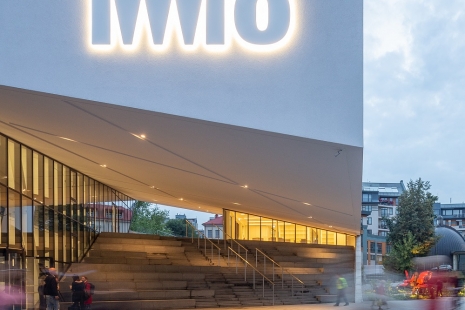‘The Meeting that Never Was’ stages an imaginary encounter by interlacing artworks from two European collections, MO Museum and Van Abbemuseum in Eindhoven, the Netherlands. There are also some important loans from other Lithuanian collections. The artists and artworks brought together here were forcibly kept apart during the Cold War. A conversation between them has become possible only now, in Lithuania. This gives us a chance to look back at an important period of art and history that continues to shape the world today. The artworks were made between 1955 and 2000, and their display broadly follows the course of time, beginning with Soviet socialist realism and US abstract expressionism and conceptualism as the dominating models of postwar modern art. As the exhibition unfolds, it brings in nuanced voices from Dutch, Western European and Lithuanian artists who found ways to address their own histories and struggles within the dominant currents and in opposition to them. Towards the end, there are works from the 1990s that look back at the period of the Cold War and how it could be understood immediately after it had ended. Although their political ideologies were very different, the ‘first’ and ‘second’ worlds shared postwar traumas and were overtaken in different ways by external cultural forces. Both US capitalism and Soviet communism looked at modernisation and industrialisation as levers of progress, and such similarities become clearer with the passage of time. Yet differences remain in the scale and ambition of works that were supported by the Western market system and those made unofficially for intimate artistic communities in Lithuania. This exhibition is particularly important for the Lithuanian society, with its lived experience of the Iron Curtain. While geographic boundaries seemed to vanish after the restoration of independence, the country continues to confront complexes related to self-esteem and the drive to catch up, as well as struggles over historical memory. Perhaps this exhibition can strike a new balance. With war, populism and new Russian imperialism all around, it seems timely to see how artists on different sides found ways to stay true to themselves and remain open to international perspectives a generation or two ago.





